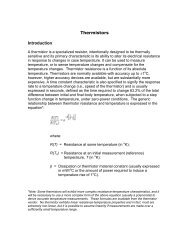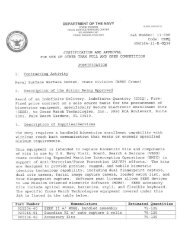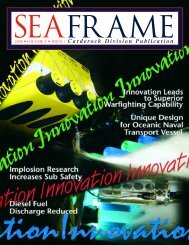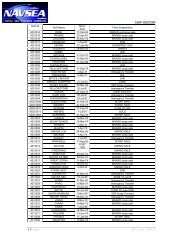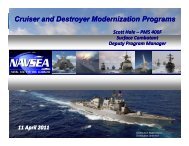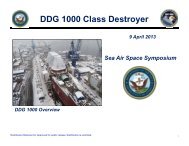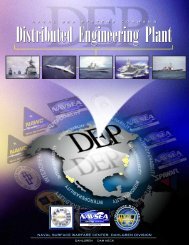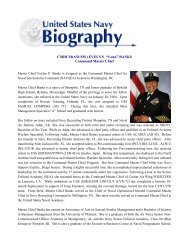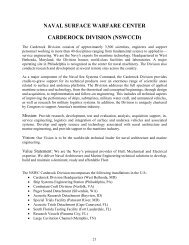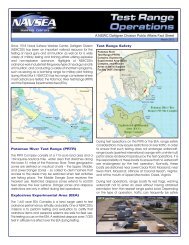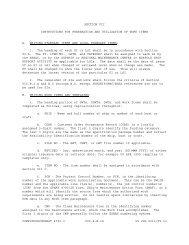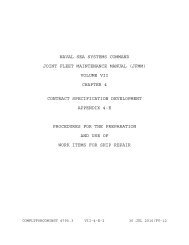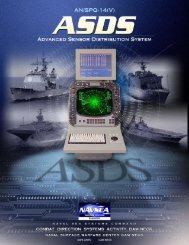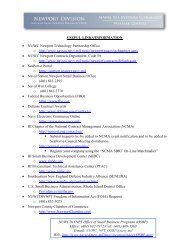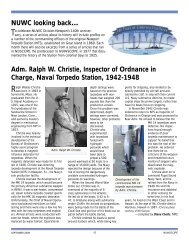Volume 6, Issue 1 - Naval Sea Systems Command - The US Navy
Volume 6, Issue 1 - Naval Sea Systems Command - The US Navy
Volume 6, Issue 1 - Naval Sea Systems Command - The US Navy
You also want an ePaper? Increase the reach of your titles
YUMPU automatically turns print PDFs into web optimized ePapers that Google loves.
SEAFRAME<br />
4<br />
FROM THE TOP<br />
BUILDING AND AFFORDABLE FUTURE FLEET (Continued on page 2)<br />
<strong>The</strong> second is to facilitate efficient and cost effective solutions by providing program decision-makers with<br />
more technical options and advising them on any associated technical risks.<br />
Carderock Division supports the <strong>Navy</strong> by providing technical capability in naval architecture and marine<br />
engineering for both the current and future fleet. To enhance the <strong>Navy</strong>’s future war fighting capabilities we have been<br />
working on cost-effective solutions that will help ships meet the increased power requirements of their mission loads.<br />
Adapting commercial developments such as using insulated bus pipe (IBP) for shipboard transmission lines could<br />
save the <strong>Navy</strong> time, money, weight, and space. In addition, IBP holds the potential for new <strong>Navy</strong> electrical distribution<br />
system designs that can reduce vulnerability, enhance survivability, and reduce ship fabrication costs.<br />
We are also looking at innovative testing methods and analysis that can achieve significant cost savings for the<br />
<strong>Navy</strong>. For example, acoustic target strength signature control technologies and analysis methodologies have evolved to<br />
the development of a prediction tool and a real-world measurement scenario that was used to certify key performance<br />
parameters for a submarine class operational requirements document. <strong>The</strong> development and use of this too–Target<br />
Strength Predictive Model and the accompanying real-world verification technique resulted in significant cost savings<br />
to an acquisition submarine program office and should lead to significant cost avoidance for future <strong>Navy</strong> programs.<br />
Two other examples of our affordability efforts can be found in our composite materials research to increase<br />
the payload and range of future <strong>Navy</strong> ships and our investigation into methods to mitigate downtime and asset<br />
degradation due to corrosion. We are also trying to find answers to some of the environmental challenges that create<br />
work and increase costs.<br />
You will read a lot more in this issue of SEAFRAME about our efforts to support Vice Adm. McCoy’s<br />
direction of Building an Affordable Future Fleet. Obviously, we cannot cover all of our endeavors in this one magazine,<br />
but affordability is and will continue to be a Carderock Division thrust. We are making significant progress, and we will<br />
continue to move forward.<br />
Above: <strong>The</strong> amphibious command ship <strong>US</strong>S Blue Ridge (LCC 19) is underway in the Pacific Ocean. U.S. <strong>Navy</strong> photo.



